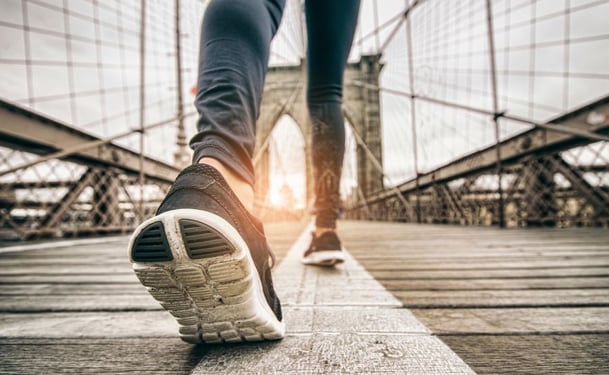The common condition called athlete's foot affects a lot of people annually. This fungal condition, also called tinea pedis, is actually one of many similar conditions, such as ringworm, jock itch or even some kinds of dandruff. All of these are related to a fungus on the skin. Athlete's foot is one that manifests on the feet, particularly on the heels or around the toes. Preventing it starts with understanding the way that tinea pedis and similar conditions work, and how their "contagious" nature relates to the passage of spores from one person to another.
Athlete's foot can produce burning or itching sensations, as well as dry, flaky skin and other symptoms like toenail discoloration. This can be an extremely unpleasant condition. Here are some of the top ways to prevent athlete's foot and avoid the associated characteristics of this dermatology issue.
1. Wear Sandals or Shoes in Public Places
Athlete's foot spreads through contact with shared surfaces. Be careful at the beach, at gyms, at campgrounds, or anywhere else where the fungus can be carried by many pairs of feet.
2. Use Shower Sandals or Mats
One of the major places that people encounter athlete's foot is in public showers. Try to limit your contact with the surfaces of public showers to minimize your chances of getting this fungal infection. It helps to have a pair of sandals that you can shower in, or your own shower mat to keep you elevated above the ground surface.
3. Get the Right Shoes
In order to prevent the spread of athlete's foot, find shoes that breathe well. Shoes that trap air or moisture contribute to more risk of developing acute cases of athlete's foot.
4. Change Socks Often
Another common type is to change your socks regularly, especially when you encounter damped conditions. Moisture can help contribute to a quicker development of this fungal condition, and wearing clean, dry socks can help limit the spread of athlete's foot.
5. Use Talcum Powder or Other Topical Solutions
Using power or other kinds of topical items can help you keep your feet dry, which can also limit your chances of getting athlete's foot. It also helps to avoid wet areas and make sure your feet stay dry, rather than walking around in wet shoes and socks after wading through a puddle or other wet area.
All of the above can help you minimize your risk of developing athlete's foot, or help with preventing the spread of you have a chronic case of this condition that seems persistent. Talk to your doctor if you experience any of the above mentioned symptoms of athlete's foot. Your qualified medical professional should be able to tell if you have athlete's foot and how you should treat it. For lots of cases of athlete's foot, doctors will recommend some kind of antifungal medications that patients will put on the affected areas daily. Lotrimin or another kind of cream or ointment can often be effective in clearing up this kind of fungal skin condition over time.



